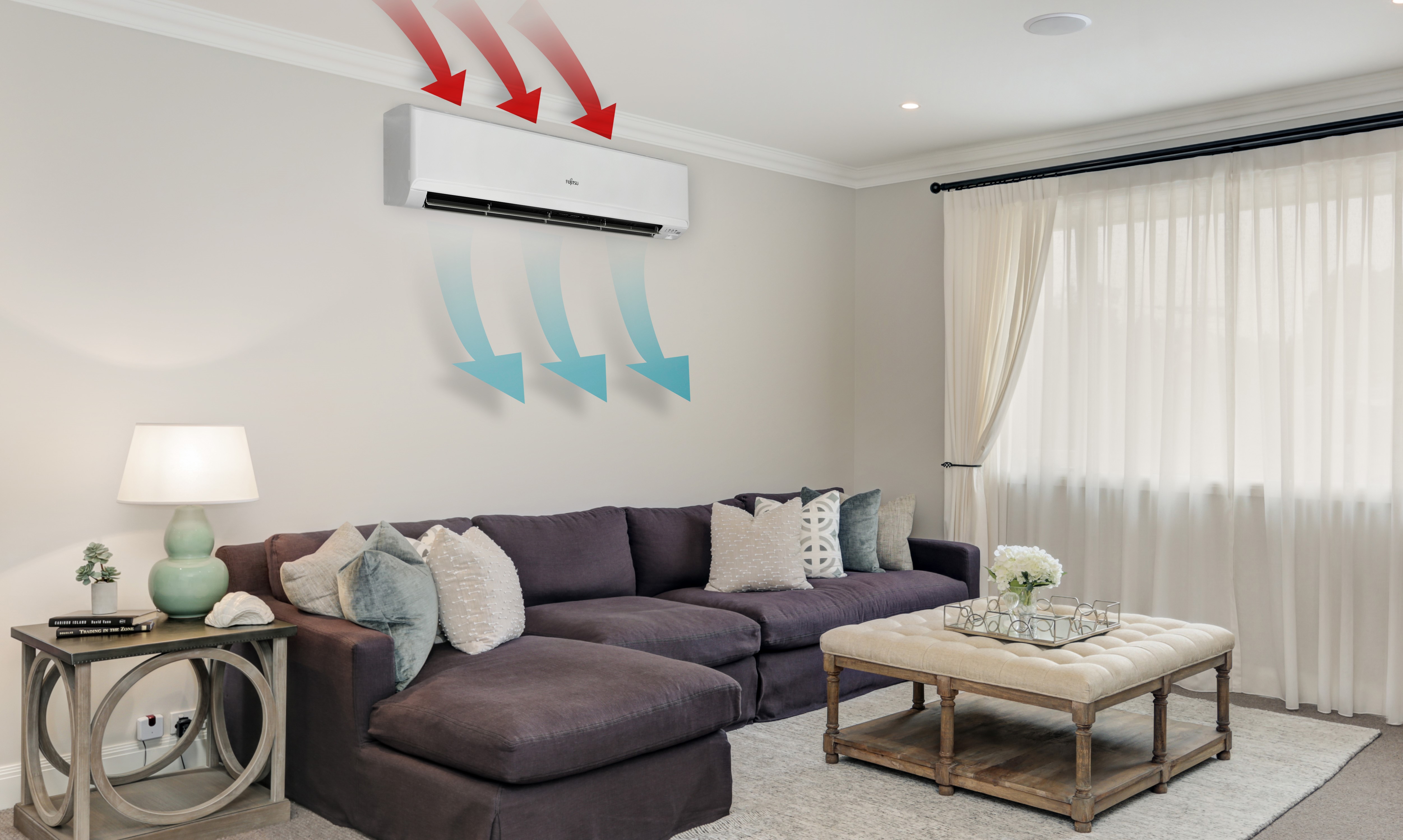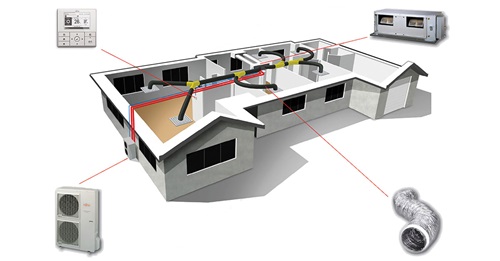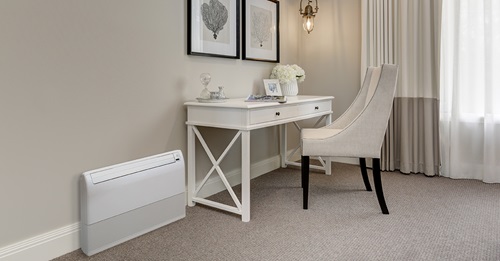How Do Air Conditioning Systems Work?

According to the Australian Bureau of Statistics, nearly half of Australian households [1] (49%) use reverse cycle air conditioning as their main source of indoor temperature control, however, they may be unaware of how their air conditioning system works.
With an expected 1.6 billion air conditioning units across the globe [2], the purpose and effectiveness of an air conditioner are very well known. It offers the benefits of creating a comfortable indoor environment all year round.
How Does Air Conditioning Work?
The three basic parts of an air conditioner are the condenser, the compressor (both often located outside), and the evaporator, which is placed inside.
When cooling, hot air is sucked in through the air intake grills. The hot air flows over cold refrigerant filled coils absorbing heat and pumping cool air back into the room through the fans. The refrigerant, having absorbed the heat, changes from a liquid to a gas state and needs to be cooled again.
The condenser turns the gas back to a liquid and the hot coils release the collected heat through the outdoor unit. As the heat is evacuated, and as the gas cools down, it changes back to cool liquid and the process starts all over again.
When heating, this cycle is simply reversed. And although it may sound complicated, the process of how air conditioners work is actually quite simple.
How Does a Split System Air Conditioner Work?
A split system air conditioner is a common type of air conditioner consisting of two units. An outdoor compressor and condenser unit is connected by ducts containing refrigerant to an indoor air handler. The refrigerant absorbs heat in the indoor room and disperses it through the outdoor unit.
How ducted air conditioning works
Ducted air conditioning operates in a very similar way to a split system air conditioner, except that the indoor unit is installed in your roof cavity and the ductwork is run through the ceiling. The ducts deliver the warm or cool air to the rooms through a ceiling-mounted outlet.
Does air conditioning take air from outside?
The idea that air conditioners take in air from the outside is a myth, unless it is a commercial application. In residential units, air conditioning does not take in air from outside.The air passes over refrigerant-filled copper coils which absorb excess heat from the air. The now cooled air is pushed back into the room. This allows you to run your air conditioner safely, even when the external air quality is poor.
For more, click the link to read Fujitsu’s article debunking five common air conditioning myths.
How can I improve the efficiency of my air conditioner?
To maximise the efficiency of your air conditioner, keep the air filters clean, seal any gaps around doors and windows, use a programmable thermostat, and schedule regular maintenance with a professional technician.
If you have a problem with your air conditioner, it’s better to trust the experts, or even better our Fujitsu General Assist team who are available on 1300 364 484.
[1] https://www.abs.gov.au/ausstats/[email protected]/mf/4602.0.55.001
[2] https://www.nytimes.com/2018/05/15/climate/air-conditioning.html
.tmb-tmb420.jpg?sfvrsn=5c4be2e1_1)


